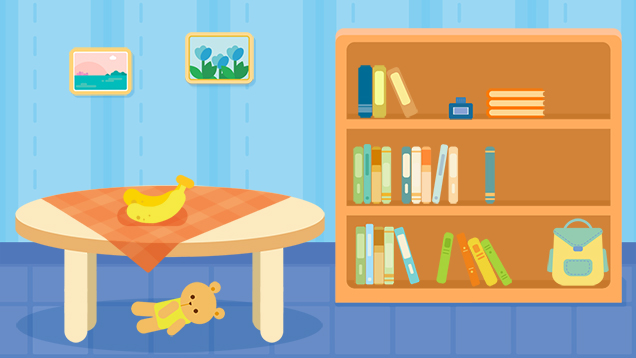Learning directions and developing a sense of direction is essential for every child. Not to worry - developing your child's sense of direction can start in early childhood and be done more easily than you might think. Read on to learn about the two stages of learning directions, and how to contribute to your child's growth in each.
1. Up and Down, Front and Back, Left and Right
It's simplest for children to learn the difference between up and down. It's a sense they will develop quite quickly in part because it is demonstrable in so many different ways: the grass is down here and the sky is up there; my feet are down there, and my eyes are up here.
Next comes front and back. As your child becomes more independent with their movement - crawling, toddling, and walking - they'll develop a feel for these two basic directions. No need to rush into telling left from right, though. You can use language and gestures to guide your child to move from place to place. For example, to crawl forward, turn around, crawl backward, crawl onto the sofa, hide under the table, etc. This verbal guidance is better than pointing and saying 'come here' because it engages more parts of your child's brain. This engagement helps develop and store memories more concretely and meaningfully, meaning your child will learn faster and retain the information better.
Finally, learning left from right. Kids struggle with abstract concepts like these; they don't have some inherent meaning to them, after all. It's easy to point to and recognize 'mom' or 'the sun,' but an abstract concept can't be learned this way. So let's employ some visual cues to help out. During play time, put a sticky note on your child's right hand and tie a ribbon to their left. You can play a game of Simon Says together - "Simon Says, right hand up!" The visual cues of the note and ribbon will give them a concrete item they can attach their thoughts to and, after a few rounds of this game, they'll be telling left from right in no time.
2. Self-Centered to Object-Centered
When you first start working on teaching orientation, you might find it's difficult for your child to identify their orientation without centering their point-of-view on themselves. Here's how to help: First, guide your child to learn to identify the orientation of their own body parts, and to relate different orientations to certain parts of their bodies. For example, at the top of their body is their head, at the bottom is their feet; their eyes see what's in front, their back is at the back, and so on.
Once they understand self-centered orientation, it's time to teach your child object-centered orientation. That is, where is object X in relation to object Y? For example: the book is on the table, the car is in front of the bus.
To accomplish this, you can play a game of hide and seek. Place some objects around the room and let your child find them: a banana on top of the table, a toy under the table, and a book bag on the far right side of the shelf. Ask your child to find these things using as specific and accurate language as possible, making sure to use the orientation words. This will instill in your child an accurate language library, and help them to form meaningful mental connections. When your child is able to describe location and orientation accurately, they can switch roles with you and take a turn hiding things around the room and giving you hints on where to find them. This is a great way to practice their speaking and focus, too!

Learning spacial orientation and developing spacial awareness is a growing process, for sure. But don't be intimidated! Like many things, you and your little one can play your way towards learning and success.
